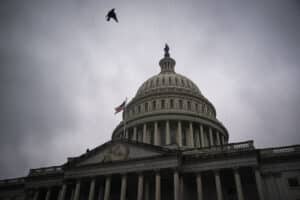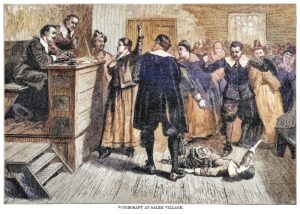In America, the law is king, not unelected bureaucrats

As support swelled for America’s independence from England, an open question puzzled some hesitant colonists: Who will lead the new country? Thomas Paine had an answer: “In America, the law is king.”
And so began a legal tradition like no other. Our written Constitution of limited and enumerated powers put forth a revolutionary idea: All government power comes from the people—and all officials are their representatives and agents.
To guard against arbitrary rule, our Constitution divided power among three branches and between the state and federal governments. The structure served as the bedrock of constitutional democracy.
Today, that foundation is showing cracks. Over the past century, regulatory agencies have accumulated vast power to make, enforce, and interpret the law—often without serious oversight.
Consider one example: The U.S. Consumer Product Safety Commission (CPSC) enforces laws designed to keep unsafe products off the market. The notoriously vague statute allows the commission to regulate any product with a “defect” that “creates a substantial risk of injury to the public.” Few would quarrel with removing defective, injury-causing products from the market. But what counts as a “defect”? And what is a “substantial risk of injury”? Most important of all: Who decides?
One might expect a jury to make the final call, but when the CPSC sues, there will be no jury. The commission itself decides what counts as a defect. Its “guidance”—a willy-nilly standard the commission can alter on demand—says the commission’s “own experience and expertise” will determine when a defect exists. Companies that disagree can defend themselves, but their case won’t be heard in a neutral, impartial court. No, the case will instead go before the Consumer Product Safety Commission itself.
The CPSC files a complaint based on what it determines is a defect. And the commissioners who voted to file the lawsuit get to decide the merits of the case. After years of litigation (and millions of dollars spent), a defendant can finally appeal to a federal court, but under current doctrine, judges’ hands are tied by the commission’s views on law and fact. The result is preordained.
No wonder over the past two decades only two companies have fully litigated cases at the commission. Everyone else gives in. Whether or not the product at issue is “defective” is beside the point; time, money, and virtual certainty of losing make any lawsuit not worth the trouble.
No wonder, too, that commissioners expect compliance. When Leachco, Inc. a small family-owned company in Oklahoma, refused to recall its baby lounger earlier this year, the commission sued in its own “court.” Commissioner Richard Trumka warned that companies that “refuse to recall products deemed deadly by CPSC staff…should expect an administrative complaint to quickly follow.” In other words: Do what we say—or else.
But the claim against Leachco strains credulity. The CPSC has identified two injuries out of 180,000 products sold. Both were caused not by the lounger but by consumer misuse. And the commission even admits that Leachco adequately labels its lounger with warnings.
So, why is CPSC going after Leachco? The commission says a defect exists because it is “reasonably foreseeable” that consumers will misuse the product—no matter what warnings Leachco provides. And now it seeks to force Leachco to recall the product and pay millions of dollars in refunds
Leachco filed a lawsuit in federal court seeking to stop the agency’s proceeding and allow it to make its case to a neutral judge. All Leachco wants is what the rule of law requires: a judge and jury.
Leachco’s conundrum is all too common. But it could soon change. Later this year, in Axon v. FTC and SEC v. Cochran, the Supreme Court will decide whether agencies can force parties to endure years of in-house proceedings before a hearing in front of a federal judge. The outcome could transform the power of federal agencies to hale defendants into regulatory “courts” before in-house “judges” who issue binding orders—the stuff typically associated with courts of law.
In May, the Fifth Circuit held that an SEC proceeding was unconstitutional because, in part, it failed to provide a jury. A curious response followed in the legal academy. Rather than applaud the revival of the civil jury, academics largely panned the decision. On Jon Stewart’s podcast, prominent professors lambasted the “crazy” decision. The ruling, they argued, would “spell the demise of government as we know it today” and “overwhelm the federal courts and just be practically impossible to actually bring all of these cases.”
Their judicial Armageddon seems doubtful. Even so, our Constitution was designed, as Justice Louis Brandeis wrote, “not to promote efficiency, but to preclude the exercise of arbitrary power.” If an agency cannot adequately prove its case to a neutral judge and jury, then the case ought not be brought at all.
For more than two centuries, our law has been based on fairness, impartiality, and predictability. But today those principles are under threat. If we don’t soon restore the reign of Thomas Paine’s “king,” he may soon head to the gallows.














